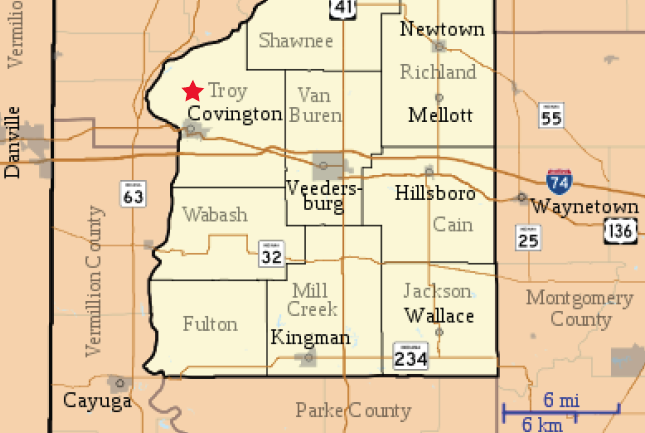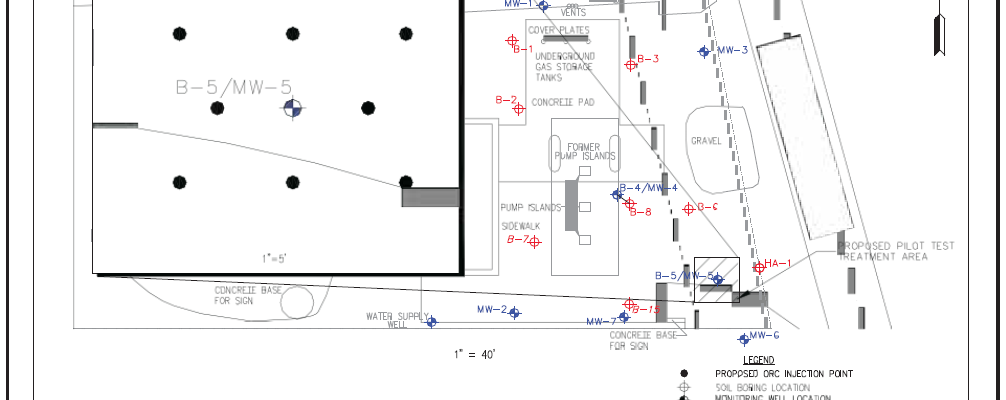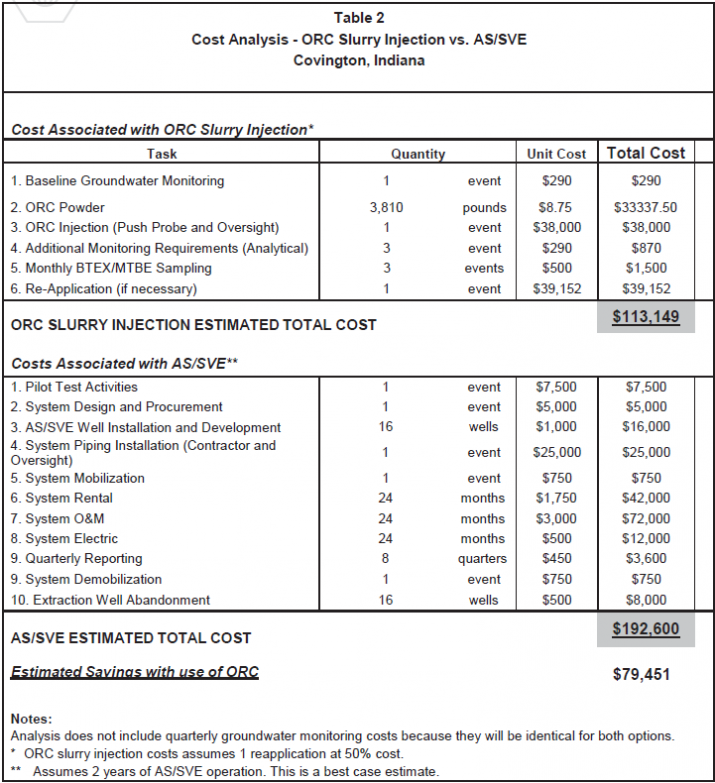In Situ Aerobic Bioremediation vs. AS/SVE Cost Comparison at UST Site
REGENESIS® Demonstrates Effective Cost-Savings Using ORC®
Project Highlights
- An in situ aerobic bioremediation pilot test demonstrates a cost-effective treatment option vs. traditional Air Sparge and Soil Vapor Extraction (AS/SVE) system
- Within one month, benzene concentrations were reduced from baseline concentrations of 200 ug/L to non-detect (>5 ug/L)
- Approach using ORC® resulted in a $79K savings vs. traditional mechanical treatment option

Project Summary
The site of a former gas station with leaking underground storage tanks (LUSTs) was chosen for a pilot test to demonstrate the effectiveness of ORC® in treating the existing benzene (BTEX) and MTBE concentrations. In addition to the pilot test, a cost-comparison was also prepared to illustrate the potential for cost-savings associated with the use of a passive, innovative technology like ORC vs. a traditional AS/SVE remediation system.
For the pilot test a 20 ft. x 20 ft. area, with the highest concentrations of BTEX and MTBE, was treated with 180 lbs of ORC. BTEX concentrations within this area varied from 200 ug/L to 2100 ug/L from low and high groundwater elevation, respectively. ORC was injected into 10 points from 8-14 ft bgs to ensure ample coverage of the sand layer and some of the smear zone.
Technology Description
Oxygen Release Compound (ORC) is an engineered, oxygen release compound designed specifically for enhanced, in situ aerobic bioremediation of petroleum hydrocarbons in groundwater or saturated soils.


Cost Comparison Analysis
A cost comparison analysis was prepared by the consultant for the Indiana Department of Environmental Management (IDEM) to show a comprehensive cost savings using ORC versus the AS/SVE system for full-scale treatment of benzene and MTBE. This cost comparison is illustrated in Table 2 and includes the initial full-scale ORC application costs as well as a second application at 50% of the initial application cost. This second application is shown as an “insurance policy” in the event that more ORC is needed to complete the remediation. The AS/SVE costs are reflective of the design, installation, and operation of such a system for two years. Based on the analysis, the use of ORC represents ~59% of the cost of the AS/SVE option or a potential savings of $79,451. If a second insurance application is avoided, then the savings are $79,451 (initial saving) plus $39,1529 (cost for re-application) equaling $118,603.
Results
Within one month, benzene concentrations in the low groundwater elevation were reduced from baseline concentrations of 200 ug/L to non-detect (<5 ug/L). Dissolved oxygen content also increased dramatically from <0.5 ppm (baseline) to >20 ppm post application. A successful full-scale application was designed using 4,000 pounds of ORC, which will save the client >$79K versus a traditional AS/SVE system.


 Americas
Americas Europe
Europe Français
Français Deutsch
Deutsch Italiano
Italiano Español
Español


